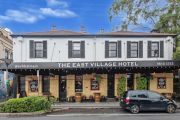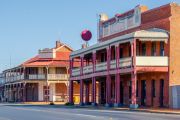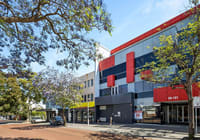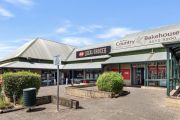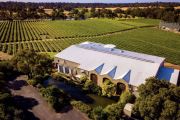
Records set to tumble inside the Canberra property bubble
Canberra’s property bubble shows no signs of bursting, with commercial office sales on track to hit a record $1 billion this year and further price rises tipped for its red-hot housing market, now on a two-year streak.
Office transactions are already running well ahead of trend, with key sales including the $306 million purchase of the Services Australia headquarters by Charter Hall and Irongate Group paying Blackstone almost $74 million for an office building in Forrest.
Another four major office deals are set to close within the next few weeks, among them the highly regarded Walker Corporation development at 50 Marcus Clarke Street, which has a price guide of about $350 million and is understood to have attracted significant interest.
Committed buyers, evenly split between local and offshore investors, are also circling the office buildings Scarborough House, 25 Constitution Avenue and 10 Hobart Place.
Combined, these are expected to fetch well in excess of $200 million, with more assets lined up for sale later this year as vendors take advantage of the strong demand and high prices.
“We’ve always said Canberra is a bubble and now, more than ever, it’s coming to fruition,” said Nic Purdue, head of capital markets in Canberra for CBRE.
Nowhere is this more evident than Canberra’s office leasing market where, unlike other major Australian cities affected by COVID-19, vacancy rates for A-grade buildings tightened through the pandemic and fell below 5 per cent for the first time since 2008.
Investors are also lured by Canberra’s bubble economy, which moves to a different beat thanks to federal government money, jobs and contracts.
Tim Mutton, head of sales and investments for JLL in Canberra, said there are between eight and 10 buyers “on everything we’re touching at the moment.
“It’s probably double to triple the interest I would have had in 2019.”
CBRE’s Mr Purdue confirmed the trend. “There’s certainly a lot of capital looking at Canberra right across the spectrum, from the smaller properties at sub 20 to 30 mill, but also at the other end – 300 mill-plus.
“It’s really positive signs.”
Yields on Canberra offices of between 5 per cent and 6 per cent are better than rival markets, particularly when combined with long-term government leases featuring annual rent increases of 3.5 per cent or more.
Total value estimates of Canberra offices sold this year vary.
Real Capital Analytics has the figure at $466 million, while JLL and CBRE estimate confirmed sales so far this year to be worth more than $600 million.
Either way, when the upcoming transactions plus others in the pipeline are factored in, it seems certain that annual office sales in Canberra will breach the $1 billion mark for the first time in 2021.
Residential market also on fire
The city’s residential market is on fire for the same reasons: strong economy, plenty of jobs and more demand than supply.
Tim Lawless, research director of property data company CoreLogic, said Canberra’s “housing market has hardly skipped a beat through the COVID pandemic”, with values rising every month since September 2019.
Canberra’s median residential property values were second only to Sydneyand rose 18 per cent over the past financial year, he said.
Only Darwin (21 per cent) and Hobart (19.6 per cent) dwelling prices have increased faster in that period.
Looking ahead, Mr Lawless said residential buyer demand was running well ahead of supply. Advertised listings were 25 per cent below the five-year average, “another factor supporting upwards pressure on housing prices”.
Meanwhile, CoreLogic says Canberra rents are the highest in Australia, increasing by up to 8 per cent over the past 12 months, resulting in strong investor demand for rental stock.
Canberra apartment developer Nick Georgalis, managing director of Geocon Group, said 70 per cent of the stock his company sold last financial year was bought by investors attracted by strong yields.
Mr Georgalis said demand remained strong. “We’ve seen a greater volume of sales than we’ve never seen before,” he said, adding that he expected the trend would be sustained.


